Reclaiming My Time at Rose Creek Preserve
Lessons from old walks, new thinking
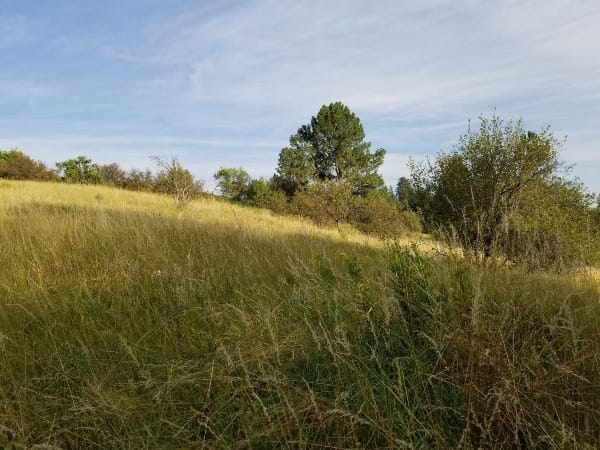
Writing advice comes cheap. But sometimes you can find wisdom in it. I’m a sucker for everything from new wholesale writing systems or a pithy note of instruction, like this:
Write about restoration, not just loss.
That comes from Roy Peter Clark in Tell It Like It Is: A Guide to Clear and Honest Writing (2023), one of many pieces he's gathered from decades of practice.
Reading such an admonition, you realize that sometimes writing advice makes good sense for life beyond prose.
With so much about the current state of affairs being about destruction–from bombs to the absence of due process to climate change–it can take effort to turn our attention to restoration. But doing so has benefits.
So does getting outside.
Five years ago, I started a writing project that remains unfinished that combined this attention to restoration and being outside.
The idea was simple, and I executed the yearlong field research without fail. During the first weekend of every month of 2020, my spouse and I visited a local nature reserve. My plan was to observe it closely through the seasons. My idea was to transform this monthly act of observation into something profound.
I deeply enjoyed every trip to Rose Creek Nature Preserve, but I never found the profundity I needed, and the writing project remains unfinished. But I’ve been wondering if the passage of five years might add wisdom.
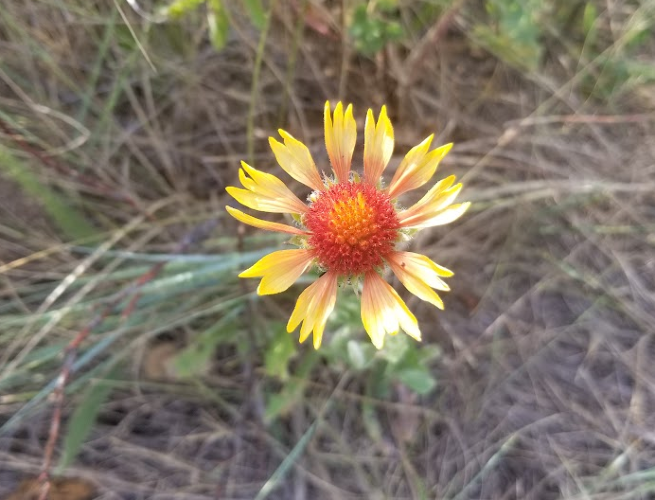
Rose Creek and Palouse Agriculture
Rose Creek was a 20-minute drive (half on gravel roads) from where we lived. It is owned and managed by the Palouse-Clearwater Environmental Institute (PCEI), a nonprofit organization based in Moscow, Idaho, whose simple mission is “to increase citizen involvement in decisions that affect our region’s environment.”
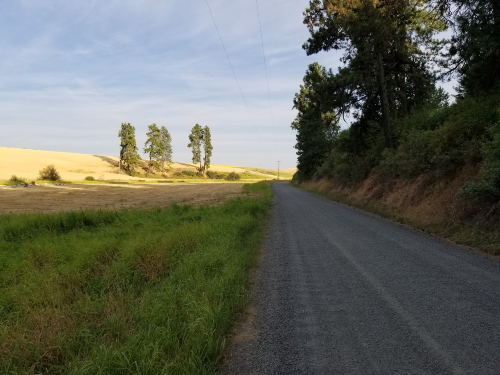
PCEI started managing Rose Creek Nature Preserve in 2005 for the Nature Conservancy and received title to it in 2008. Currently, it is 22 acres and contains some of the best remnants of native Palouse ecosystems. A friend of mine who wrote the best environmental history of the Palouse told me that Rose Creek is how the Palouse used to look–at least in the lowland patches.
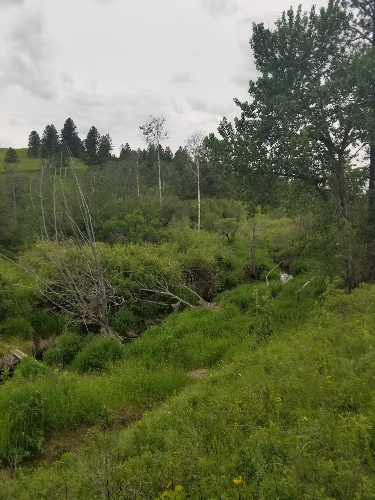
There are very few spots still like it. The Palouse prairie is nearly extinct. With less than 1% of its original habitat left, patches like Rose Creek are special. The Palouse, an area of rolling hills in southeast Washington stretching a ways into neighboring Idaho, has been an agricultural powerhouse for well over a century, mainly for wheat. As prices went up and as official US farm policy became “get big or get out,” Palouse farmers took out hedgerows and fencerows and planted from edge to edge.
Although the Palouse remains overwhelmingly rural, it is an industrial landscape in any real meaning of the word. The scale of agriculture there is represented by the fact that the average farm size is about 1,200 acres. To be competitive, a farm that size must use industrial tools–fertilizers, fuels, pesticides–rooted in fossil fuels and chemicals that could rival all sorts of manufacturing that we associate with “industrial.”
In this vast sea of industrial wheat (and some legumes scattered about), Rose Creek can represent a nostalgic glimpse of a remnant past and a hopeful glance toward a reclaimed future.
Observing Monthly Changes
The trail through the reserve when we made our monthly visits traveled through some trees and brush before coming to the creek. It follows the creek for a couple hundred yards in and out of meadows and a lowland forest. It crosses a bridge and then winds up and loops around the prairie. The entire trip was less than a mile (although current maps show that they have extended the trails since we visited). Some big ponderosa pines dot the property, but most plant life thrives on smaller scales.
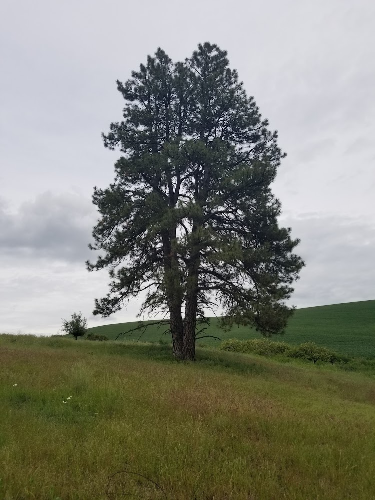
After a dozen deliberate trips around the trail, it felt familiar.
In my notes from summer 2020 (my focus here), I rely on my previous several months for comparison. Some of my scrawling handwriting references basic, objective details, but more and more of it compares summer to earlier times:
- “Grasses MUCH taller.”
- “Don’t hear water as prominently.”
- “We are definitely past peak wildflower season.”
Not to mention lots of bugs, louder birds, and more heat.
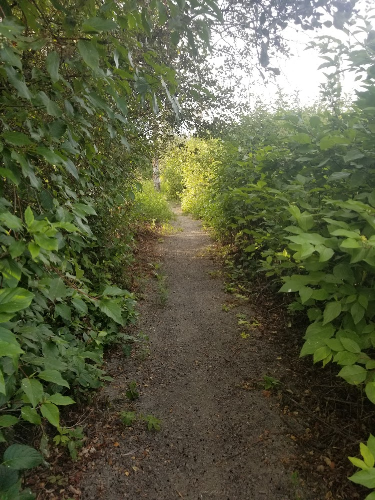
By any reasonable measure, these observations are mundane. (It’s clear why I never produced some profound essay out of such weak raw material!)
But in them I am reminded of something valuable about comparisons. Much knowledge is relational. Information without context has limited meaning.
The entry from our first visit in January is probably the longest set of notes, but the observations are purely descriptive. I could not say “MUCH” or “as prominently” without having previous experience. In this way, a yearly journal like the one I created gets more valuable the deeper one gets into such a project. (I imagine a return now, five years after, would reveal even greater insight.)
On the other hand, with greater familiarity it becomes harder to be objective. On a first visit, you see things fresh; on subsequent visits, your view begins with more and more preconceptions already in sight. I realize this is all obvious, but becoming more conscious of it may enrich our perspectives.
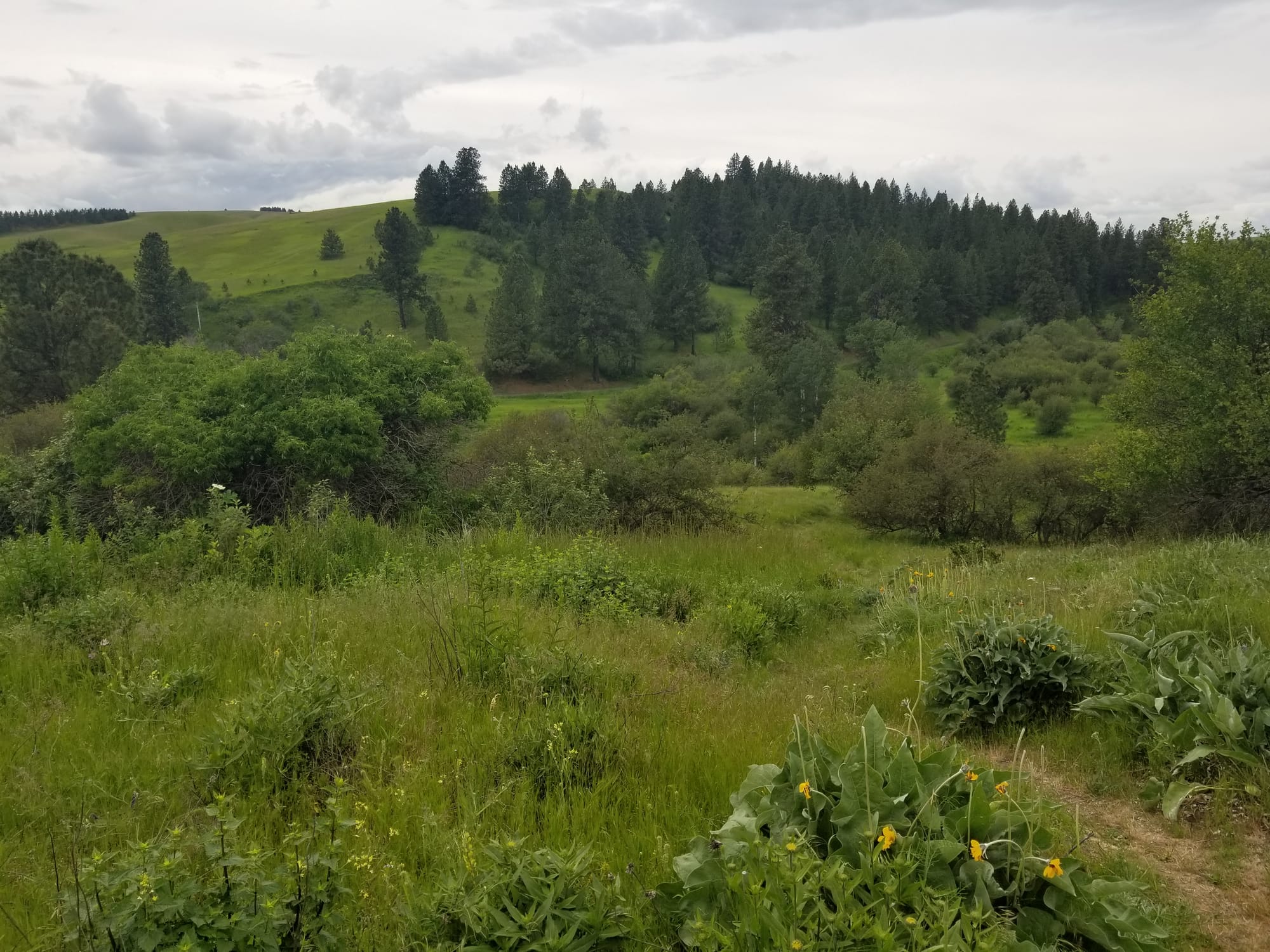
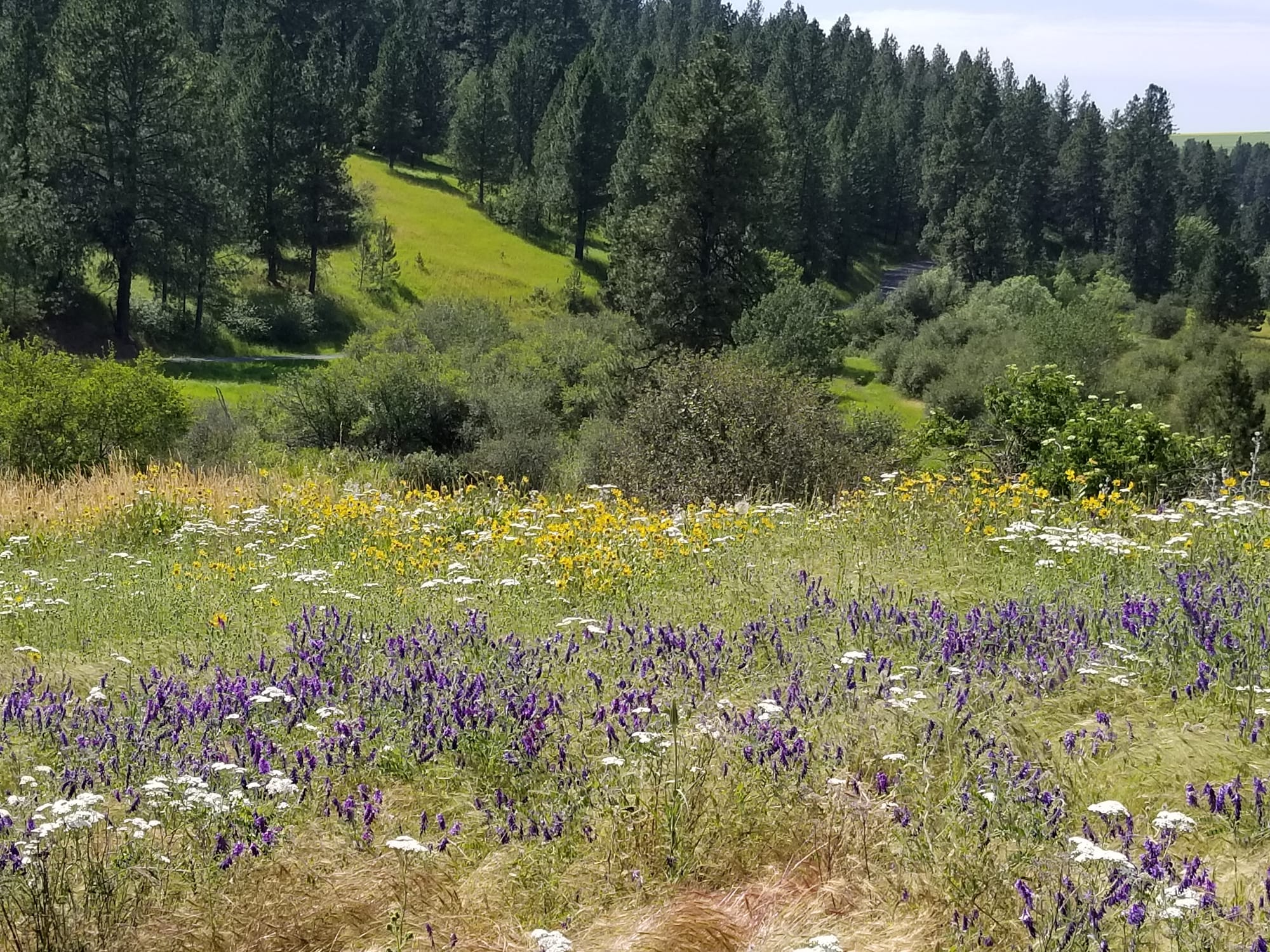
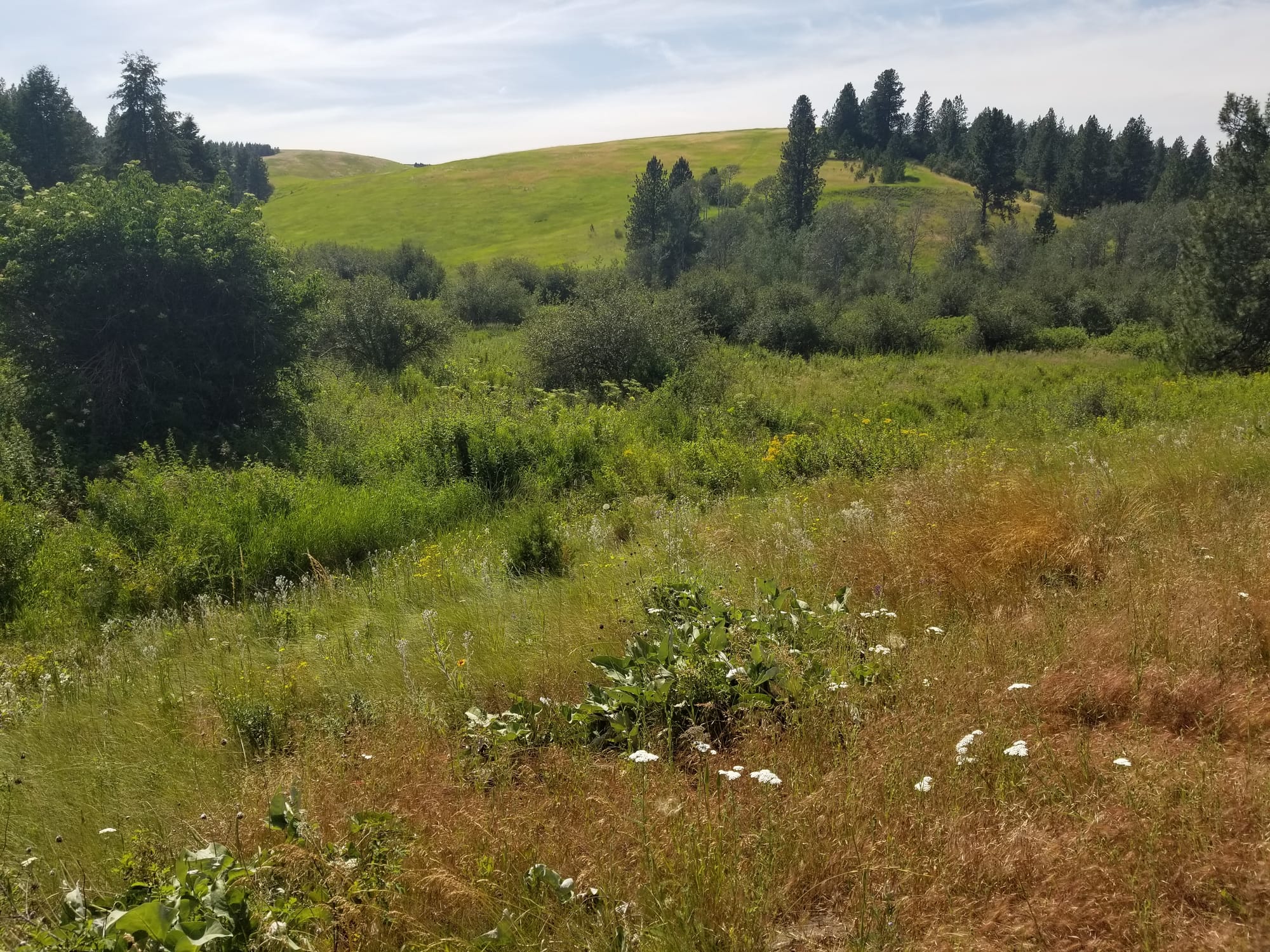
June, July, and August from a similar spot on the property, 2020. (author photo)
Applied more widely, it would mean would might value experience more than newness, something difficult in a youth-obsessed culture (on the other hand, the gerontocracy in Washington, DC, is not acquitting itself well with all its vaunted experience).
A Poor Naturalist
I’m not much of a naturalist, so most of my entries tended toward the vague–“wildflowers,” not prairie smoke and certainly not Geum triflorum.
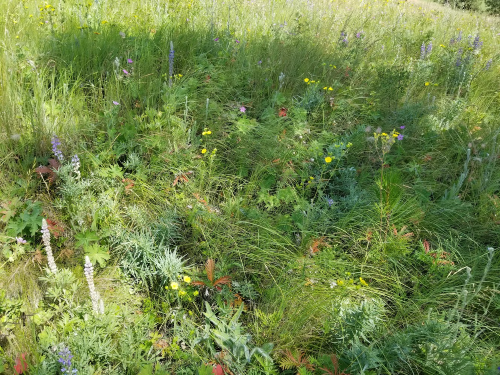
Still, I noted bees (that sound like a plane, according to my note), deer and deer paths, stinging nettles (as tall as me in June and 10 feet in July), cheatgrass (everywhere in the upper meadow), elderberry (“lots of new growth on those,” my wife said), hummingbirds, ponderosa pines, California poppies, Nootka rose, lupine, grasshoppers.
It’s a site rich with life, especially when compared with thousands of acres of wheat that cover the region, starting just over the property line.
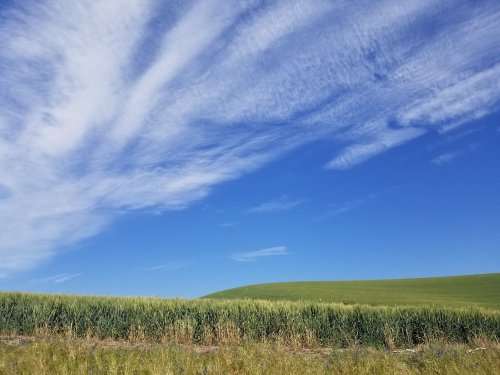
This biodiversity comes from care and geographical accidents. If you drive through the main Palouse roads, you mostly see farmland. You might see a forested ridge at a distance, but on the gravel roads you often skirt creeks whose riparian areas that have been saved from annual passes of the plow.
PCEI has been hard at work planting native trees, shrubs, and grasses, building on the work done before they took care of the property. The evidence is not only in the diverse plant life but also the blue plastic tubes protecting young trees and shrubs. These provide stability and protection from animals who might damage the new growth. After all, we saw beaver dams here enacting their own reclamation of place.
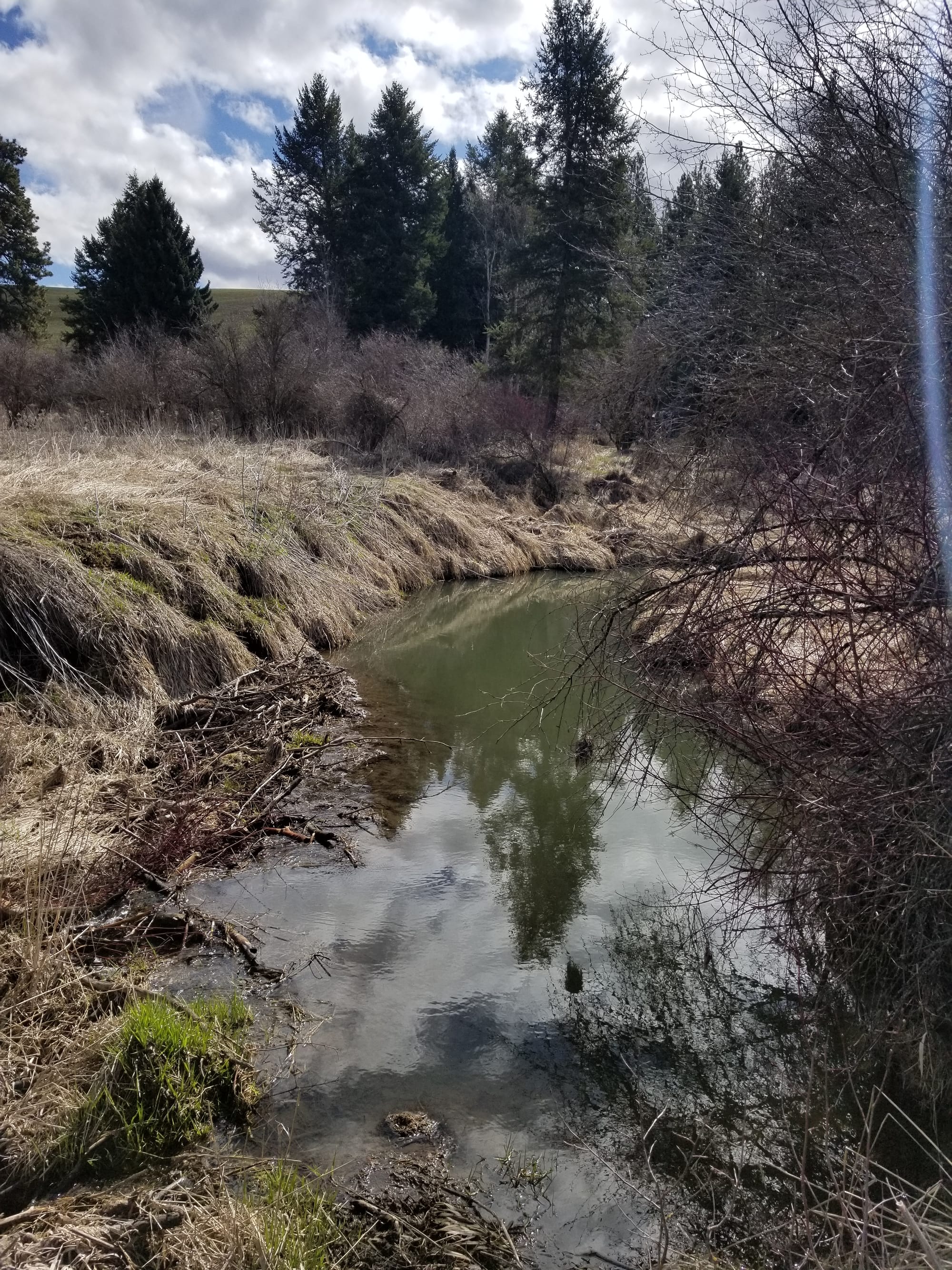
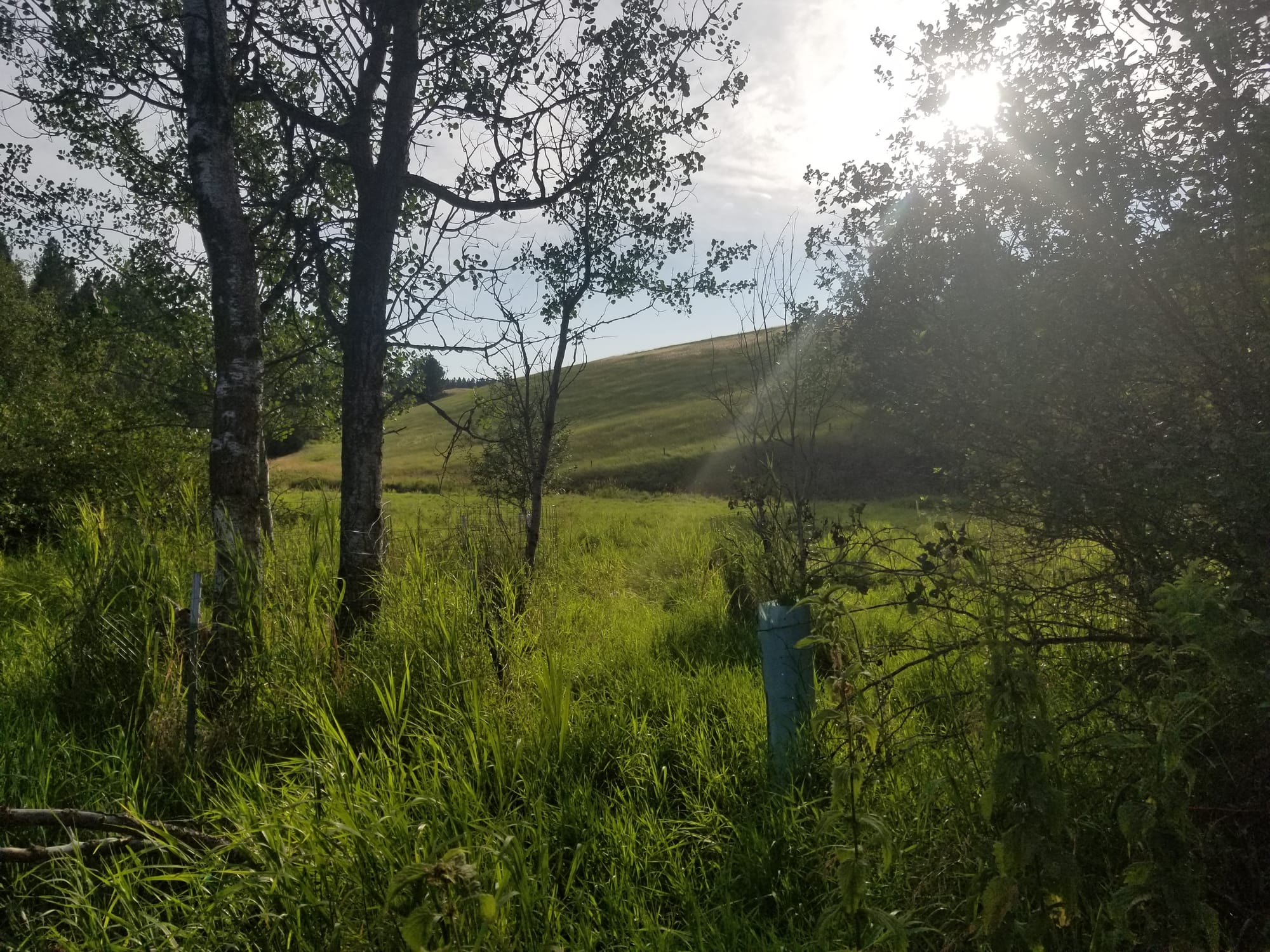
Two types of reclamation, human and nonhuman, April and August, 2020. (author photos)
All of this feels good and right.
To Reclaim, Not to Restore
The writing quotation at the start speaks of restoration, and the activity here could be described that way. Restoration ecology is, after all, a discipline designed to “sustain biodiversity, improve resilience in a changing climate, and re-establish an ecological healthy relationship between nature and culture.”
But the writer Ana Maria Spagna argues for “reclamation” instead, and I think it’s a substitution worth considering.
She thinks restoration or similar words like preservation or conservation suggests an idealized state, something that we might cling too closely too. Reclamation offers something better, Spagna argues in her book Reclaimers. To her, reclamation comes down to three ideas and actions: “to take back, to make right, and to make useful.”
I like this reframing. It is moral and pragmatic and may move us forward in action.
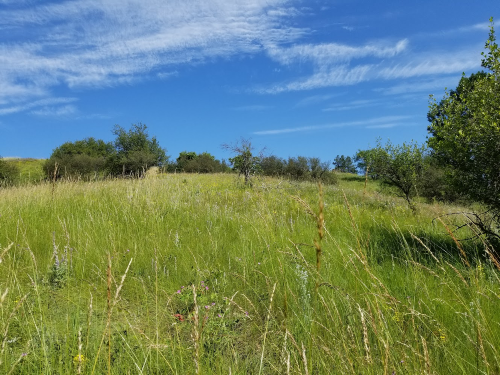
If what is happening at Rose Creek preserve is reclamation, I think we need more pockets like this, expanding outward.
My year-long experiment was its own sort of reclamation. We reclaimed time for ourselves, outside, observing changes and beauty in the details. We might all reclaim a little more for ourselves and the living world we are part of.
Sadly Redundant Postscript
When I opened one of my notebooks from this project, dated January 4, 2020, I read, “Two days ago, the President ordered the killing of an Iranian military leader who was in Iraq. A second killing happened yesterday. War hangs in the air and information is so faint, trust is hard to come by.” And at the end of my trip to the reserve on July 4, I noted “Corona still happening. POTUS still dumb.” I could not have expected such comments to remain relevant five years later.
There is more reclamation we will need to do or there will be much more loss.
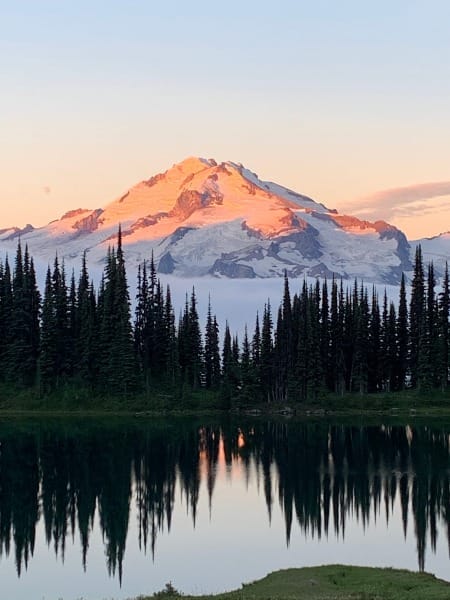
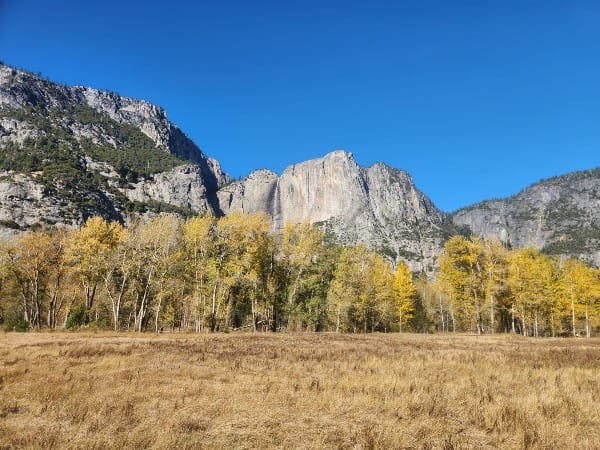
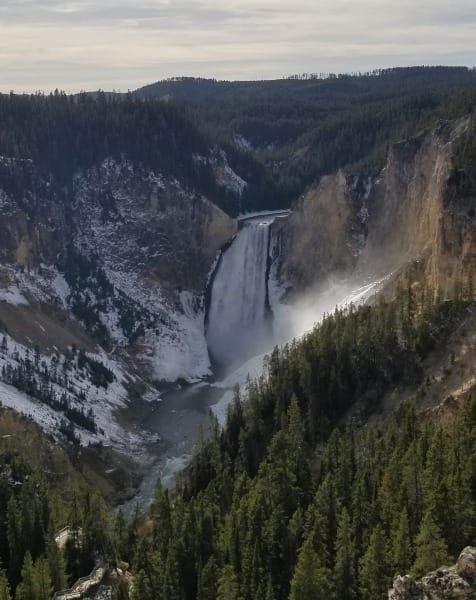
Comments ()